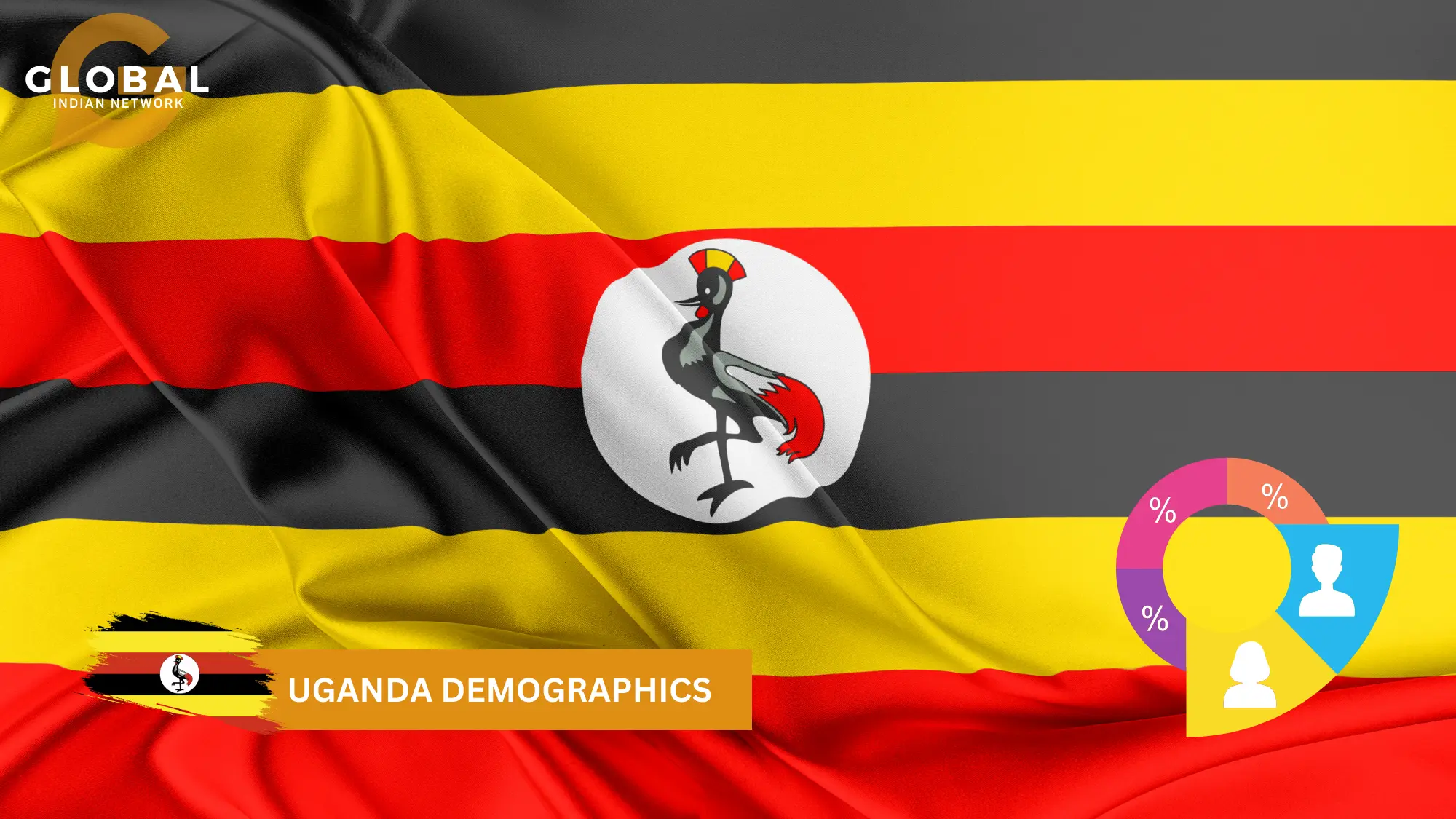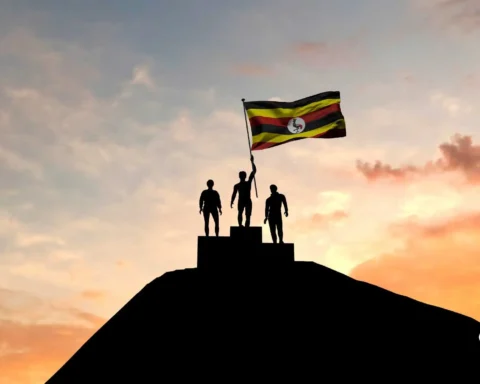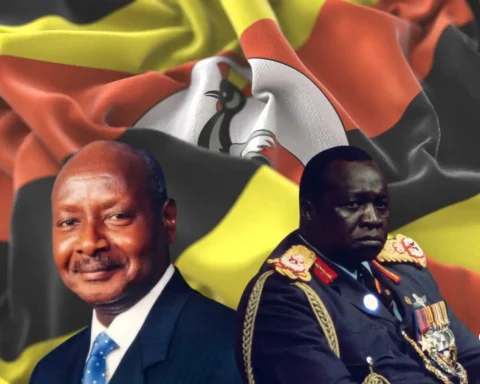If you are interested in reading about Uganda Demographics, you have reached the right place. Uganda, a landlocked country in East Africa, boasts a rich tapestry of cultures, languages, and landscapes. One crucial aspect that defines any nation is its demographics. Understanding Uganda's demographics is vital to comprehending its unique character and trajectory in a rapidly changing world. In this article, you will delve into Uganda's demographics, exploring age distribution, gender composition, population trends, and the latest developments shaping its demographic landscape.
Table of Contents
Uganda Demographics: Population Overview
In this section, you will provide a concise overview of Uganda's population, drawing insights from data provided by the United Nations Population Division. Additionally, you will explore the significance of Uganda's official language in the context of its demographic landscape while considering the geographical influence of iconic East African lakes like Victoria and Albert in shaping the nation's demographics.
Population Density in Uganda
Uganda, with its diverse landscapes ranging from the shores of Lake Victoria to the lush greenery around Lake Albert, boasts a population density that varies across the country. As of the latest available data from the United Nations Population Division, Uganda's population stands at approximately 45 million people. This places it among the more densely populated nations in East Africa.
Uganda's Location in Sub-Saharan Africa
Situated in the heart of Sub-Saharan Africa, Uganda shares borders with South Sudan, Kenya, Tanzania, Rwanda, and the Democratic Republic of Congo. Its central location in the region has played a pivotal role in its history and demographics, with influences from neighbouring nations contributing to its cultural and ethnic diversity.
Historical Perspective
A complex history of colonialism, independence, and subsequent political changes has shaped Uganda's demographics. The nation emerged from British colonial rule in 1962, and since then, it has witnessed both stability and challenges, reflected in its population growth and distribution.
Age Structure
In the following section, you will delve into Uganda's age structure, examining how data from the United Nations Population Division illuminates the nation's youthful demographic composition and its profound implications for its future.
Youthful Population
One striking feature of Uganda's demographics is its youthful population. The majority of Ugandans are under the age of 30, with a median age of around 16 years. This youthfulness presents both opportunities and challenges for the nation. On the one hand, it indicates a potential labour force that can drive economic growth and development. On the other hand, it underscores the need for robust educational and healthcare systems to harness this demographic dividend.
Impact on Economy and Society
The youthful demographic can be a double-edged sword. While it holds promise for the future, it also requires significant investment in education, healthcare, and job creation to ensure that young Ugandans can contribute meaningfully to the country's development. Addressing youth unemployment and providing access to quality education are pressing concerns.
Challenges and Opportunities
Uganda's demographics also highlight the need for policies that address the challenges associated with a youthful population, including teenage pregnancy, early marriage, and limited access to healthcare. However, this demographic can be a source of innovation, entrepreneurship, and cultural vitality if managed effectively.
Gender Composition
In the upcoming segment, you will explore Uganda's gender composition, shedding light on the distribution of males and females within the population with insights drawn from the United Nations Population Division's data. This analysis will reveal the challenges and progress in achieving gender balance in the nation's demographics.
Gender Distribution in Uganda
The gender composition of Uganda's population is relatively balanced, with slightly more females than males. This distribution is important for social cohesion and development. However, gender disparities persist in education, employment, and political representation.
Gender-Related Issues
Despite progress in recent years, Uganda still faces challenges related to gender equality. Gender-based violence, limited access to education for girls, and disparities in economic opportunities remain concerns. Efforts are underway to address these issues through legislation and advocacy.
Progress and Initiatives
Uganda has made strides in promoting gender equality, including implementing policies to increase women's participation in politics and the workforce. Organisations and activists are working tirelessly to raise awareness and drive change in this critical area of demographics.
Population Trends
Next, let's examine Uganda's population trends, drawing on United Nations Population Division data. This analysis will shed light on recent demographic changes, urbanisation patterns, and fertility and mortality rate shifts, providing a comprehensive view of the nation's evolving demographic landscape.
Recent Population Growth
Over the past few decades, Uganda has experienced significant population growth. The nation's population has more than doubled since 1990, reflecting a combination of high birth rates and decreasing mortality rates. This growth has put pressure on infrastructure, healthcare, and education systems.
Urbanisation in Uganda
Urbanisation is a notable demographic trend in Uganda, with a growing percentage of the population residing in cities and towns. This shift has implications for employment, housing, and access to services. Kampala, the capital city, has witnessed rapid urbanisation, leading to opportunities and challenges.
Fertility and Mortality Rates
Uganda's fertility rate, while decreasing, remains relatively high compared to global averages. Efforts to improve access to family planning and maternal healthcare have been ongoing. Similarly, reduced child mortality has been achieved through enhanced healthcare services, but challenges persist in reaching remote and underserved areas.
Government and Policies
In the upcoming segment, you will delve into Uganda's government and policies, focusing on the leadership of Yoweri Museveni and the nation's commitment to cultural diversity reflected in its choice of an official language. You will also explore the influence of these factors on the demographic landscape, drawing insights from available data sources.
Yoweri Museveni's Leadership
Yoweri Museveni has been prominent in Uganda's political landscape for several decades. His leadership has played a significant role in shaping the nation's policies and development strategies, including those related to demographics.
Official Language and Ethnic Diversity
Uganda's diverse ethnic composition and multilingual population are reflected in its choice of English as the official language. The nation's commitment to inclusivity and cultural diversity is a cornerstone of its demographic makeup.
Economic Growth and Development
Uganda has experienced periods of economic growth, which have impacted its demographics. As the nation continues to develop, education, healthcare, and employment policies will be critical in shaping the future of its population.
Future Prospects
In the following section, you can read about Uganda's future prospects by examining projections and forecasts, particularly those provided by the United Nations Population Division. You will also assess the critical areas of healthcare and education, exploring how they are poised to shape the nation's demographic landscape in the years ahead.
Projections and Forecasts
The United Nations Population Division and other organisations regularly project Uganda's demographic trends into the future. These projections provide valuable insights for policymakers, helping them anticipate and address challenges related to population growth and age distribution.
Health and Healthcare
Improving healthcare services, particularly in rural areas, will be crucial for addressing Uganda's demographic challenges. Reducing maternal and child mortality and managing the prevalence of conditions like cerebral palsy is a priority.
Education and Literacy
Investing in education, especially for girls and young women, ensures that Uganda's youth can contribute effectively to its development. Promoting literacy and expanding access to quality education will be critical drivers of progress.
Conclusion
In conclusion, understanding Uganda demographics is crucial as it is a dynamic and evolving landscape characterized by a youthful population, gender diversity, and urbanisation. While the nation faces challenges related to youth unemployment, gender inequality, and healthcare access, it also possesses immense potential for growth and development. As Uganda continues to navigate its demographic journey, effective policies and investments in education, healthcare, and economic opportunities will be crucial in shaping its future.
FAQs
What is the racial makeup of Uganda?
The racial makeup of Uganda is predominantly Black African, with a diverse range of ethnic groups.
What is the largest ethnicity in Uganda?
The largest ethnicity in Uganda is the Baganda, who comprise a significant portion of the population.
What are the demographics of Uganda by age?
Uganda has a predominantly youthful population, with a median age of approximately 16 years, reflecting high birth rates and reduced mortality rates.
Why is Uganda so ethnically diverse?
Uganda's ethnic diversity results from its historical and geographical factors, with various ethnic groups inhabiting the region over time and the colonial legacy of British rule fostering a multi-ethnic society.











[…] Uganda, known as the 'Pearl of Africa', is situated in the eastern region of Africa and is commonly known for its breathtaking landscapes, wild animals, and serene weather. However, many do not know of its population, which has a rich history that is as diverse as its landscapes. […]
[…] The amount of daily waste generated in India is estimated to rise significantly in the coming years. Besides polluting the nation and bringing in significant environmental concerns, improper waste management poses serious health risks to all age groups of the population. […]